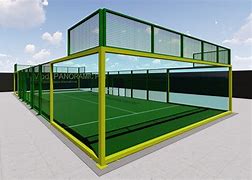

The Evolution of Paddle Tennis Racquets A Look Inside the Factory
Paddle tennis, a sport that has gained immense popularity in recent years, combines elements of tennis and squash while being played on a smaller court. One of the most critical aspects of the game is, undoubtedly, the racquet. The paddle tennis racquet has undergone significant changes over the years, and this article dives into the intricate world of paddle tennis racquet manufacturing, exploring the materials, technology, and craftsmanship that go into creating these essential pieces of sports equipment.
Understanding Paddle Tennis Racquets
Unlike traditional tennis racquets, paddle tennis racquets are solid, with no strings, and are typically made from a composite material incorporating foam and fiberglass or carbon fiber. These materials provide the necessary balance of power and control, allowing players to perform skillful shots with precision. The dimensions of a paddle tennis racquet are generally 18 inches in length and 9.5 inches in width, adhering to the standards set by governing bodies.
The Manufacturing Process
Paddle tennis racquets are manufactured in specialized factories equipped with state-of-the-art technology. The process begins with the selection of raw materials. Composite materials are sourced from reputable suppliers to ensure consistency in quality. Manufacturers often choose high-density ethylene vinyl acetate (EVA) foam for the core, coupled with a fiberglass or carbon fiber face to enhance durability and performance.
1. Design and Prototyping Before mass production, the design phase is crucial. Engineers and designers work collaboratively to create various prototypes, testing different shapes, weights, and balances. This phase may involve computer-aided design (CAD) software to simulate the racquet's performance and aesthetics.
2. Core Production Once the design is finalized, production begins with crafting the core from EVA foam. This foam is molded and compressed to achieve the desired density and resilience. The core's properties significantly influence the racquet's feel and responsiveness on impact.
3. Face Layering The next step involves layering the racquet face. Fiberglass or carbon fiber sheets are carefully cut and laid over the core. These materials are known for their tensile strength and lightweight characteristics. A resin is applied to bond the materials together, ensuring a robust structure capable of withstanding the rigors of competitive play.

4. Molding and Shaping After the face is prepared, the entire assembly is placed in a mold to achieve the final shape. The curing process involves heat and pressure, solidifying the structure and enhancing its physical properties. This process is critical for ensuring the racquet maintains its integrity during play.
5. Finishing Touches Once molded, the racquets undergo surface treatment to enhance grip and aesthetics. This includes sanding, painting, and applying a non-slip coating on the handle. The final step is quality control, where each racquet is inspected for defects and tested for performance standards.
Advances in Technology
As the popularity of paddle tennis grows, so does the technology behind racquet manufacturing. Innovations such as vibration dampening systems, adjustable weight systems, and tailored grip sizes are increasingly common. These features allow players to customize their equipment according to personal preferences and playing styles.
Furthermore, manufacturers are exploring eco-friendly materials to reduce their environmental impact. Biodegradable components and renewable resources are gradually being integrated into the production process. These advances not only contribute to sustainability but also cater to the growing consumer demand for responsible manufacturing practices.
A Cultural Phenomenon
Paddle tennis is not just a sport; it has become a cultural phenomenon across the globe. With a diverse player base ranging from casual enthusiasts to professional athletes, the demand for high-quality racquets continues to rise. Factories that produce these racquets are not merely production facilities; they embody the passion and dedication of artisans committed to enhancing the game experience.
Conclusion
The world of paddle tennis racquet manufacturing is a fascinating blend of art and science. From the selection of materials to the precision engineering processes, each step is meticulously executed to create a product that can elevate a player's game. As the sport continues to grow, so will the innovations and craftsmanship behind the racquets that define it. Whether you’re just starting or are an experienced player, understanding what goes into your paddle can help you make an informed choice, ultimately enhancing your enjoyment and performance on the court.
High-Performance Industrial Flooring Solutions China Paddle Tennis Court for Sale
High-Performance Industrial Flooring Solutions Durable & Cost-Effective
Homogeneous Transparent Floor – Durable & Stylish Rubber Floor Solutions
Premium Homogeneous Transparent Floor for Durable & Stylish Spaces Rubber Floor Solutions
Premium Sports Floor Solutions Durable PVC Sports Floor & Rubber Floor for Gyms
Durable Rubber Composite Floor Premium Rubber Floor & Mats Solutions